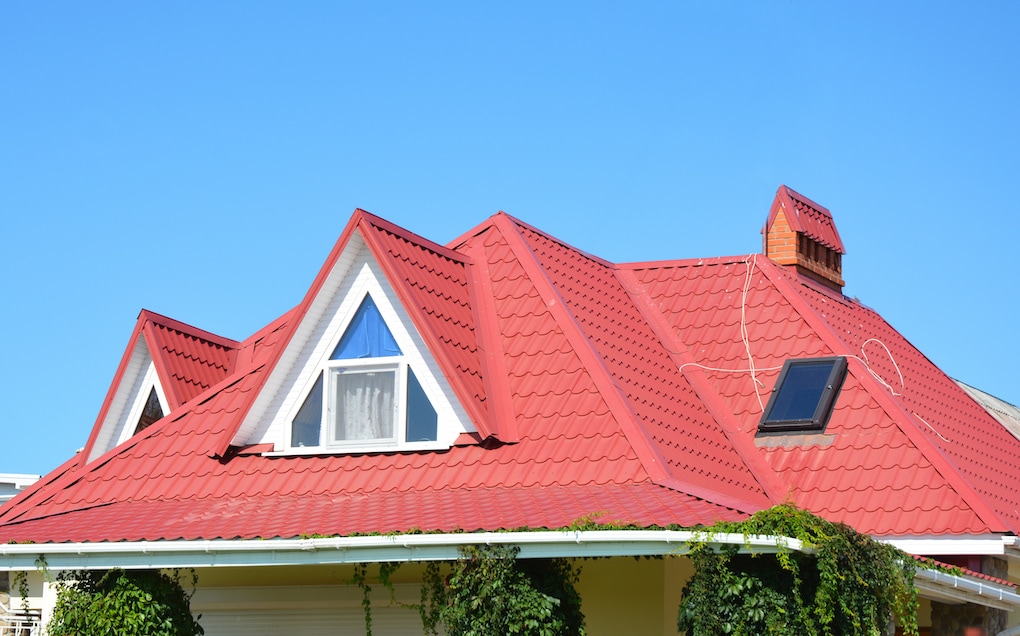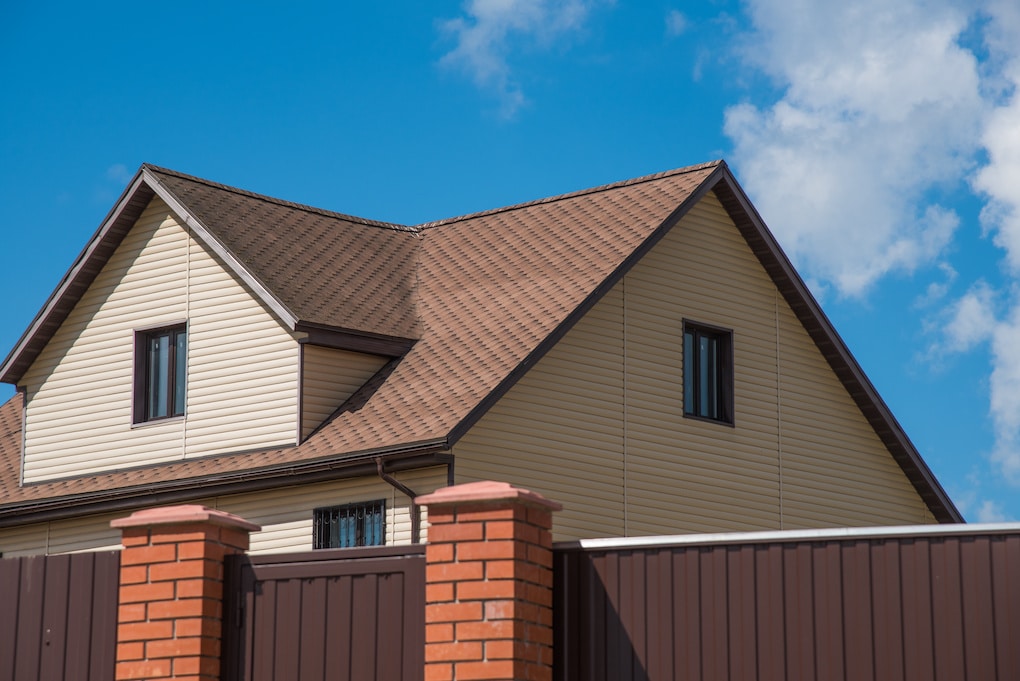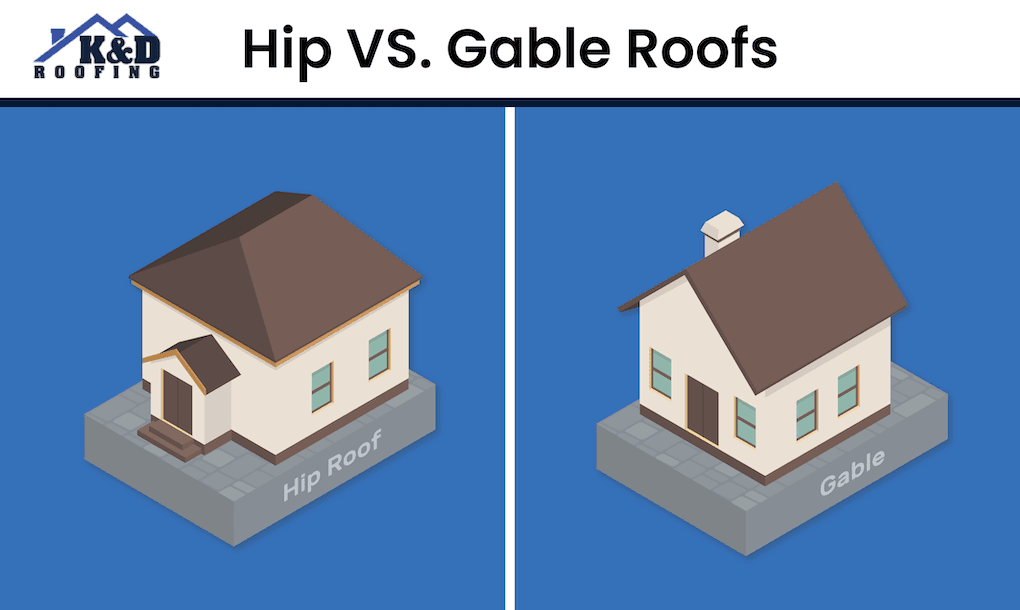Roofs range dramatically from complex and custom designs to A-frame styles that highlight simplicity.
Knowing the difference between a complex roof and a simple one is as easy as seeing them side by side. But there are specific terms and types of roofs in the roofing world.
Hip and gable roofs are two of the most popular types. Today we’re breaking down their differences in both design and function.
Hip Roof vs. Gable Roof–What’s the Difference?
The difference between these roofs is easily spotted from the side.
A traditional hip roof has four slopes at a hip, or ridge, in the center. A traditional gable roof is triangular and has two slopes meeting at a single peak or gable.
Today, these roofs can vary from basic to more complex.
What Is a Hip Roof?
From an architectural standpoint, hip roofs are more complex and can be more expensive to build. They also offer greater weather protection and tend to be more wind resistant. The hip roof gets its name from the hips or ridges that come together in the center of the roof. These hips create four triangular slopes on each side of the roof.
When there are more than four sides to a hip roof, each side will always be sloped towards the center of those other sections. These roofs often make homes look larger and are considered the premium option.

Dutch Roof
Common Hip Roof Variations
Within hip roofs, several common variations make the roof look a specific way or serve a purpose.
- Pavilion Roof – sometimes called the pyramid roof, the pavilion roof would be placed on a square structure, and all sides would come together to form a single peak.
- Mansard Roof – each side of a mansard roof includes two different sloping angles where the lower angle is much steeper than the upper angle.
- Tented Roof – a multi-sided hip roof with steeply pitched slopes that rise to a peak. These roofs are similar to the idea of a church steeple and often are polygonal.
- Dutch Gable Roof – the dutch gable refers to a roof with a small gable section on the upper portion of the roof and thus creates a hybrid of sorts.
- Half-Hip Roof – when adding a hip section to a gable roof, you get a half-hip roof.
Pros of a Hip Roof
- Self-bracing
- Withstands hurricanes well
- Improves curb appeal
Cons of a Hip Roof
- Increased construction cost
- Higher risk of leaks
- More expensive for heavier materials
What Is a Gable Roof?
Gable roofs are the most popular roof style in North America. They’re simple, efficient, and attractive. A gable roof is triangular with two slopes meeting at a single peak or gable.
Gable roofs are generally less expensive than hip roofs and can be completed faster. They also offer great ventilation and the potential for attic space that the homeowner can use.

Common Gable Roof Variations
Like the hip roof, there are several variations of the gable roof.
- Open Gable Roof – open gable roofs are the most standard form of a gable roof. The two sides of the roof meet together in the middle to form a triangle.
- Box Gable Roof – similar to a basic or open gable, the box gable offers a greater extension and emphasis on the triangle (peak) of the roof.
- Gambrel Roof – gambrel roofs are often used on barns or large, tall structures that should be less exposed to the wind. These roofs have two lower sloped sections followed by two steeply sloped roof sections.
- Cross-Gabled Roof – cross-gable roofs have two or more gable roof lines that meet and intersect at an angle. Often these ridgelines are perpendicular to each other.
- Flying Gable Roof – flying gables are one of the least common gable roofs. These roofs still meet at a peak, but they offer another angle for a greater roof overhang.
Pros of a Gable Roof
- Easily shed water and snow
- More attic space or vaulted ceilings
- Better ventilation
- Cheaper installation due to simple design
Cons of a Gable Roof
- Problematic in high-wind areas
- High winds will more easily peel materials away

Choosing the Right Roof Style for Your Home
If your home is already built, you won’t be able to adjust the roof, but when you’re building a new home or doing any major renovations, you may be able to choose between a hip or gable roof.
There isn’t a right answer as to which roof will be better for your home unless you live in an area that’s prone to high winds and hurricanes.
K&D Roofing can help you choose the right roof for your home. And if you need help repairing, replacing, or redesigning your roof after heavy storm damage, we’d love to help with that as well!
Reach out to our team today for a free inspection!

